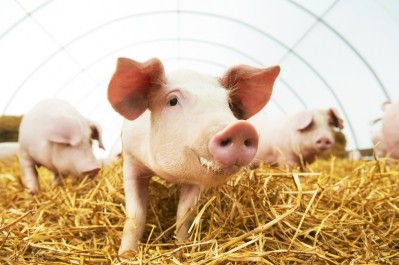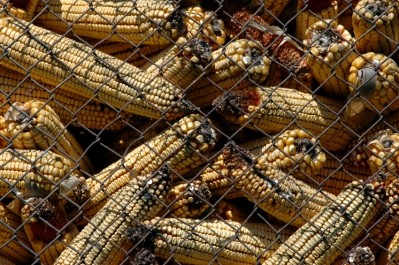Alltech mycotoxin report says levels could cause financial damage for US swine, poultry sectors

Findings from Alltech’s 2015 North American harvest report suggested that the levels present in this year’s corn crop could cause economic damage for producers of swine and poultry, even if levels aren’t as high as some years, said Dr Alexandra Weaver, mycotoxin management team technical support.
Last week the feed additive supplier told us about the implications for cattle in the US arising out of its survey.
The samples were analyzed for several different mycotoxins, she said. And each contained an average of 3.1 mycotoxins.
“This is lower on average than last year, but it doesn’t mean that the risk is any less,” she said. “It depends on the mycotoxins present and the level at which they’re found.”
This year’s samples included fumonisins, Fusaric acid, and B Trichothecenes, she said.
“The levels aren’t too high by themselves, but there’s quite a lot of range,” added Weaver.
Production decline
Nursery pigs have the highest risk of being negatively influenced by the amounts of mycotoxins in their feed as they can be more sensitive than older animals, especially to fumonisins, said Weaver. Of the samples tested, about 27.6% were high risk and 29.9% were moderate risk.
Poultry are a little more tolerant to fumonisins, and about 80% of the feed samples would be low risk for broilers and about 69% for layers, she said.
“If you have very high levels of mycotoxins you could see challenges right away, but when we have these lower level challenges there will still be effects to gut health,” said Weaver. “It can add up over time and become profit loss.”
In nursery pigs, the amounts could cause loss of average daily gain, an increase in the feed conversion ratio and could mean the need for about four extra days of feeding to bring a pig to average market weight, she said. It amounts to about $6.42 per nursery pig or $3.09 for grow finish pigs.
For broilers, there could be lost carcass profit of about 0.21 cents a bird, or the need for an extra 2.5 days on feed, she said. And, for layers, it might mean a loss of about 3.8 eggs, slightly lighter eggs or 0.42 cents per hen.
Even with lower levels of mycotoxins being present in feed stuffs than past years, there are still certain signs that producers should watch for, in case a negative reaction is developing, Weaver told us.
The symptoms include digestive disorders and increase in diarrhea for pigs or wet litter for poultry, she said. Variations between growth performances and bodyweight for animals also can happen, or they may need additional health treatments.
“Finally, if the producer is frequently and accurately measuring gain or production performance, they may notice small changes in the animal’s performance,” she told us. “All of these factors can of course add up over time to cause long term impacts on performance and profitability.”
Testing updates and mitigation
The process of testing for mycotoxins has advanced from using tools like black lights to test for individual toxins, to the development of new technology that identifies several kinds at once, said Weaver. While simpler tests can still be used, especially for a quick test of feed materials, advanced diagnostics may provide greater understanding of mycotoxin interactions.
“Currently, the laboratory analyzes 38 mycotoxins, which are mycotoxin compounds considered to be most problematic for animal production systems,” she said. “Although these mycotoxins currently tell us a great deal about the potential risk to animal production, there are always opportunities to add more mycotoxins to the Alltech 37+ mycotoxin analysis if new research is published that indicates a mycotoxin to be of significant concern.”
Different mycotoxins often co-contaminate feed stuffs, she said. In the most recent report more than 66% of samples had two to five mycotoxins present and the multiple mycotoxins can build off one another to increase the risk for the animal.
“Once the mycotoxin content in the feedstuff has been determined, it may be beneficial to use that feed material in the ration at a lower inclusion rate in the ration,” she said. “This may help reduce the overall risk to pigs or poultry. Additionally, it may also be beneficial to utilize a mitigation product that can be beneficial to the animal during a multi-mycotoxin challenge.”







